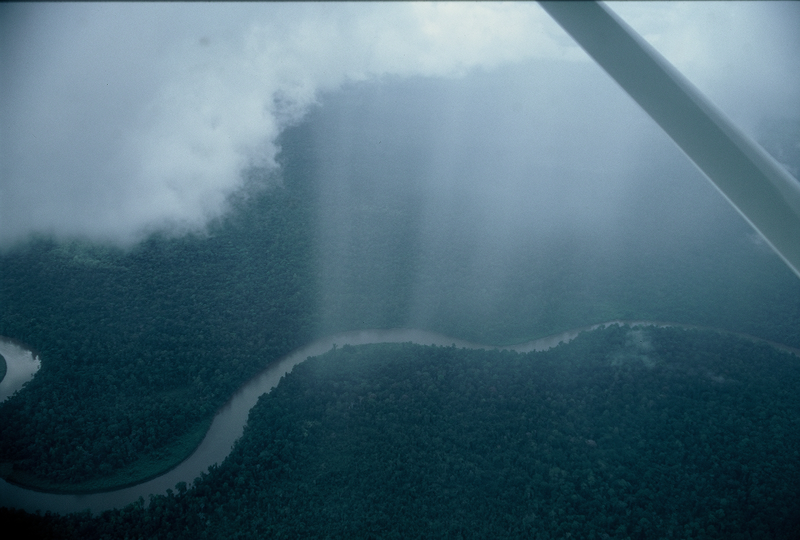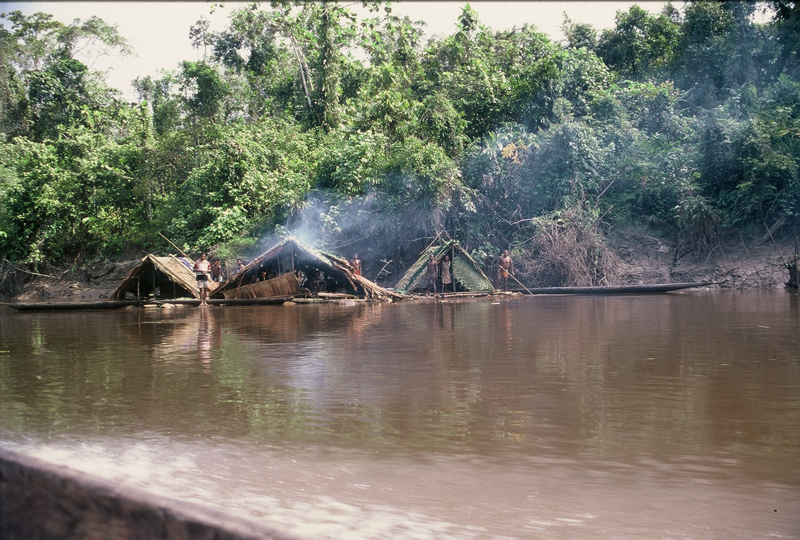|
|
During our first trip to Papua (at that time known as Irian Jaya) we noticed an impressive carved wooden pavilion in a district near the harbour of Merauke (former capital of the Asmat region), the first step in our adventure towards the interior. We learned that the building would house a permanent exhibition of Asmat art.
We had the opportunity to visit the site only thirteen years later, after several trips in the Asmat region, during which we discovered and learned to appreciate the artistic skills of the swampland people.
|
Inside the pavilion, along the walls, we saw row after row of objects of Asmat art and handicraft. Bizarre carvings engraved with bold lines and curves, circles, intricate bas-reliefs, praying mantis, sting-rays and other totemic symbols. Dimensions ranged from a few centimetres to several metres, painted in the three traditional colors, ochre red, black and white. We saw drums, spears, net bags and spirit costumes woven from rattan and bast string, bowls and containers, but especially sculptures and ancestor poles of different sizes, war shields incised with highly stylized designs.
|

|
We were looking at the valuable evidence of an outstanding primitive art collection, stored in the pavilion in a period of over thirty years, with the aim to exhibit and promote Asmat art to the outside world.
We understood why in 1961 Michael C. Rockefeller, a young graduate in Anthropology at Harvard, lost his life in the search and study of this art, at the age of 23. The works collected during his trips in Papua were donated to the Metropolitan Museum in New York and represent the most important part of the Oceanic Art galleries.
|

|
The provenance of the sculptures were the villages of Sawa-Erma, Senggo, Basman, located in the foothils of the mountain range, Biwar Laut, Atsj and Agats along the coast. These locations are unknown to the majority of the people, but are well-known by art collectors and galleries in Bruxelles, Paris, Berlin and San Francisco.
The rainforest and swamps of South Papua evoke a dramatic and strong atmosphere, morning mists, sudden rainfalls in a silent forest, broken by the call of the birds, a spark of blue in the sky while travelling in the meandering rivers, the longhouses on the river banks and the tree-houses inside the forest. Agats, in particular, is known as an equatorial Venice, a town built on several kilometres of wooden raised walkways above the muddy ground, where tidal waves can reach a height of 5 metres.
|
The Director of the Museum explained that, since the Asmat territory was not within Merauke’s sphere of competence any longer, they had to dispose of the whole collection in some way, selling it off in the shortest time possible.
We were overwhelmed and amazed by the vastity and beauty of the collection.
Our project was born in that moment; we decided to acquire the collection so as to preserve and call attention to the fascinating and important cultural heritage which belongs to the Asmat People.
|
The art of carving perpetuates the link between the material and the spiritual world. Should this be destroyed, the Asmat people would be easily extinguished, like the American Indians, and become a touristic attraction with a limited possibility to express themselves.
|

|
|
|
|
|